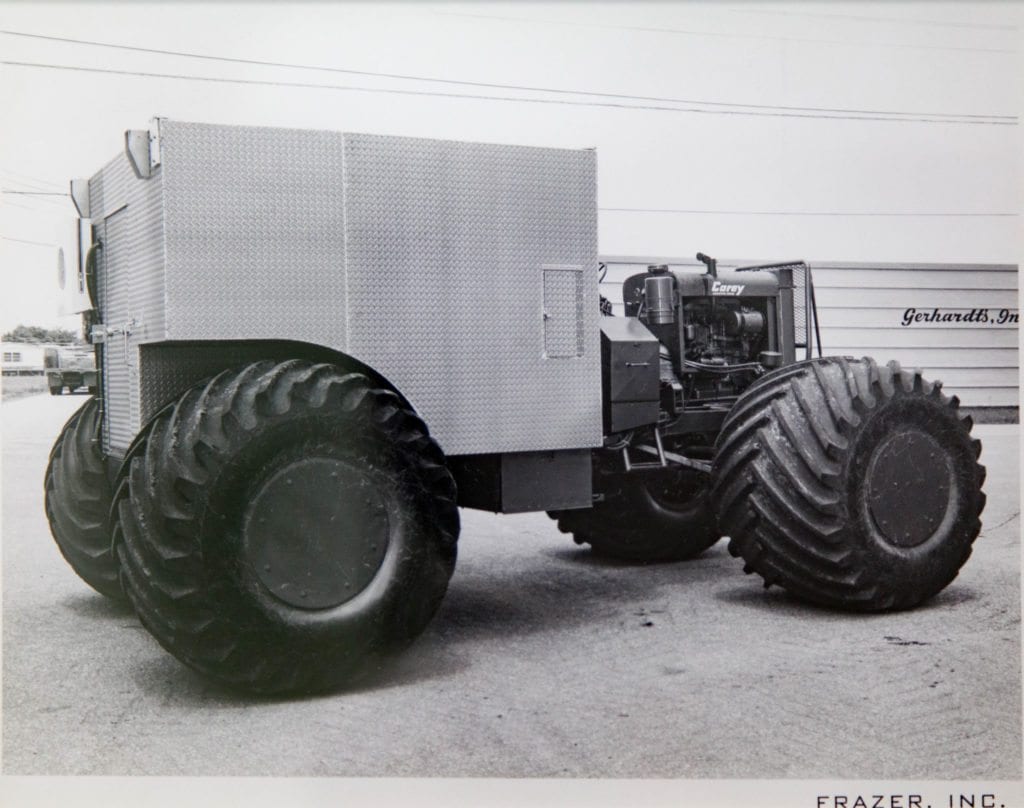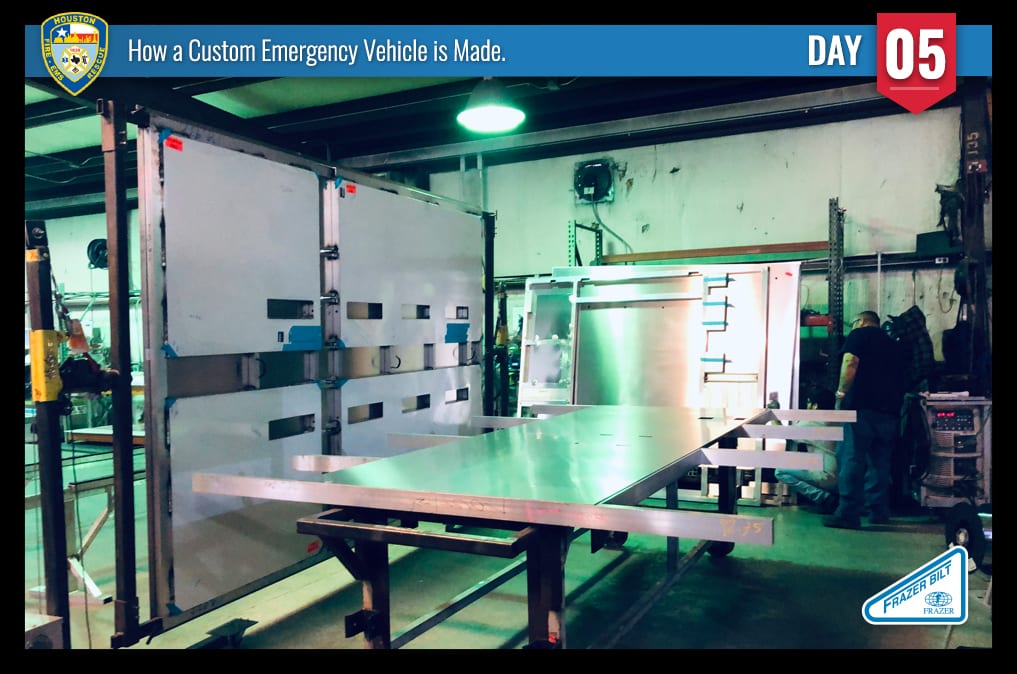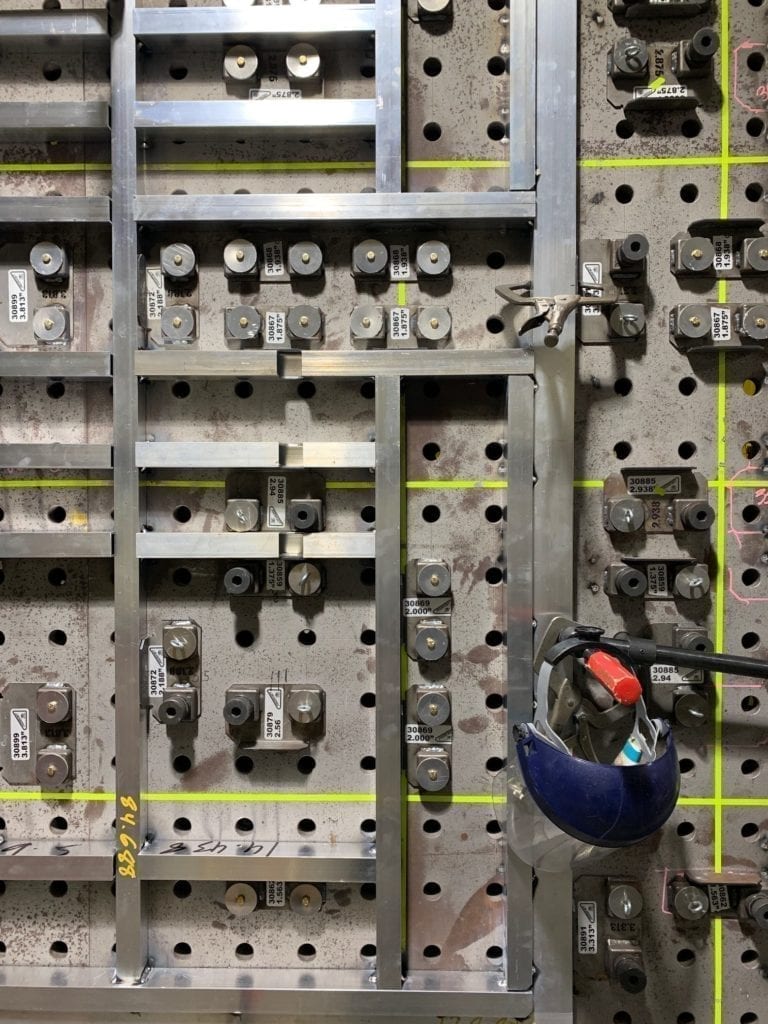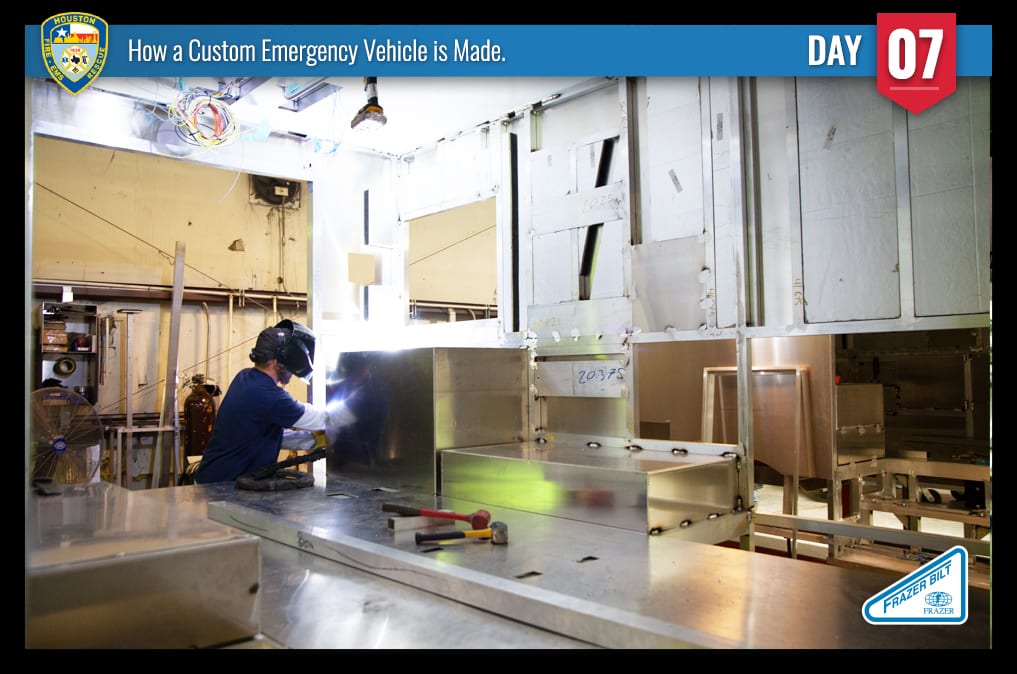Over the years we’ve heard a lot of different questions surrounding our construction methods. Why the square corners? Do your modules hold up? How do you mount the module to the truck? Is it safe?
In this episode we’ll tackle some of these questions and maybe even answer some you didn’t know you should be asking.
The Modular Body
From the time we started building truck mounted modular vehicles, Frazer has needed to design for extremely harsh environments, frequently the kinds without roads. So we were ready for the transition to the rigors of the EMS industry. As with any structure, strength comes from a solid foundation and a Frazer EMS vehicle is no exception.

Base Frame
The strength of your Frazer module begins with an extraordinarily beefy base frame. Let’s take a look at some of the specs:
- 6061-T6 structural alloy
- 3” x 1.5” x .1875” rectangular tubing
- 3” x 1.5” x .1875” channel
- .250“ plate
- .375” plate
- 4” x 10” x .5” steel shear plate
- .5” Grade 8 bolts
So what do all those numbers mean? The heat treated 6061-T6 alloy tubing provides a Frazer module with an excellent strength (20,000 – 40,000 psi tensile) to weight ratio, excellent weldability, and superior corrosion resistance. This particular alloy represents a typical first choice for architectural and structural applications and we appreciate the durability and strength it has provided us and our customers over the years.
Construction
Our 3” x 1.5” base frame tubing represents a 12.5% increase over the 2” x 2” tubing commonly used in base frame throughout the rest of the industry. And our intricate frame design features shorter spans of 3” x 1.5” channel reinforcing the longer 3” x 1.5” tubing lengths in parallel with the chassis frame for maximum strength along that axis.

All of this tubing receives additional support from .250” and .375” plate welded throughout the frame. These plates provide a solid surface for cot and captain’s chair retention, as well as O2 bottle holders, and other optional features. They simultaneously create extremely strong corner gussets at key locations.
And there wouldn’t be any point in designing and fabricating a ridiculously strong base frame if we didn’t attach it to the truck in the strongest way possible. For that we take eight (ten on a 14’ module) 4” x 10” x .250” steel shear plates and bolt them to both the chassis frame and the base frame with .5” Grade 8 bolts. Each plate uses 4 bolts, 2 in the chassis frame and 2 in channels on the module frame. The module bolts are insulated with rubber to avoid electrolysis. Each bolt carries a tensile strength of 150,000 psi. This attachment method is the primary reason we’ve NEVER had a base frame detach from its chassis during a violent collision.
Side and Front Wall Frames
So you put all that structure in your base frame, why wouldn’t you do the same for the side walls? 34 years of both building EMS vehicles and repairing them after major wrecks have given us a much greater sense of where most impacts occur than we could get from simple controlled destructive testing. And we’ve found that side wall impacts most commonly occur at or below module floor level. Once again, the beefy base frame helps out in those circumstances, but the side wall frames take very little impact.
Using 1.5” x 1.5” x .125” square tubing through the side walls allows us to maintain necessary structural strength for things like mounting cabinets and compartments, seat belt plates, grab rail plates, and more, without adding unnecessary weight to your module. New cot retention systems, upgraded medical devices, bariatric requirements and more have increased the empty weight of the modern EMS module. This tubing dimension also yields extra space throughout the interior of the module resulting in more room to move and work on your patients.

Where the driver and passenger side walls meet the front wall results in a corner structure that, like the strongest portions of the base frame, ends up at 3” x 1.5”. This welded, “laminated” corner piece is also bolted together to create an extremely strong leading edge of the module. Front corner impacts happen very frequently and the Frazer design provides strength where you need it. Some folks complain about the looks of the “square corners.” But we know how important they are to your safety, so we think they’re kind of awesome.
Rear Walls
The rear corner impact is kind of the gold standard for how an ambulance gets in a wreck. So common, in fact, that Frazer has made these two corners the focal point of some serious strength. Our rear walls feature 2” x 2.5” rectangular tubing, a 25% increase over industry standard.
Again, we know where crashes occur. And we know where you need strength and durability. So if we’re going to add the weight associated with a larger extrusion, we’re going to apply it where it makes sense for your safety. Plates for grab handles, door hold opens, and other options provide structural reinforcement throughout.

Roof
If your vehicle rolls over, and we know they do, you’d better have a solid roof. Consequently, Frazer views the roof construction in much the same way as our base frame, it needs to be as sturdy as the foundation. Accordingly, we use the same 2” x 2.5” rectangular tubing as the rear wall around the perimeter of the roof, where that structure will be welded to the supporting side walls. The resulting corner piece ends up with an effective 3.5” side and of course there is .250” plate throughout for overhead grab bars and other optional equipment.
Durability
Everything we learned about building vehicles for the extreme environments found in the oil fields around the world found its way directly into our EMS vehicles. Some seismic recording modules we built well over 40 years ago are still in use. If you saw our last post maybe you noticed the Bellaire Fire Department still runs a module we built 26 years ago. And they’ve remounted it twice. So yeah, we know a thing or twenty about durability.
Testing Testing
And not only do our modules meet the minimum requirements for structural integrity as promulgated by the major standards, we WAY exceed them. Our Triple K and and SAE top and side static load tests showed no deformation even with 70,000 and 55,000 pounds loaded on them respectively. Couple that level of strength with a unibody construction designed to give you maximum protection, and you can see why our customers, especially those who have experienced some sort of collision in one of our vehicles, keep coming back time after time.
You can learn more about our construction methods by calling one of our Sales Team at 888-372-9371. If they can’t answer your question, they can get one of our Engineers to help out. Or you can click here to learn more about our vehicles.

